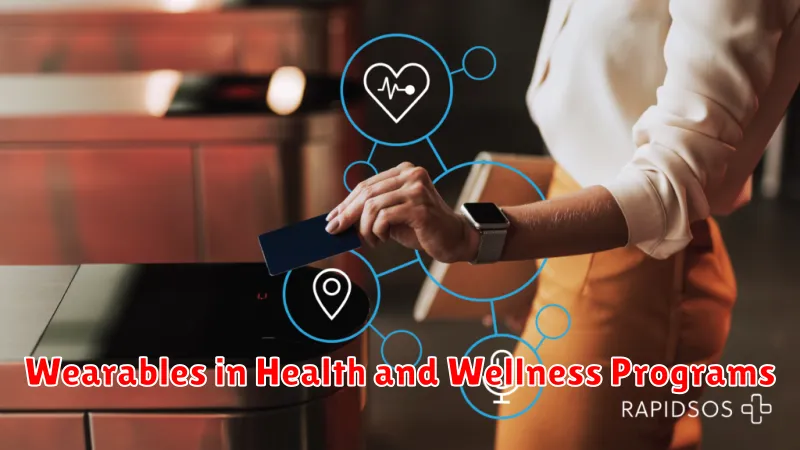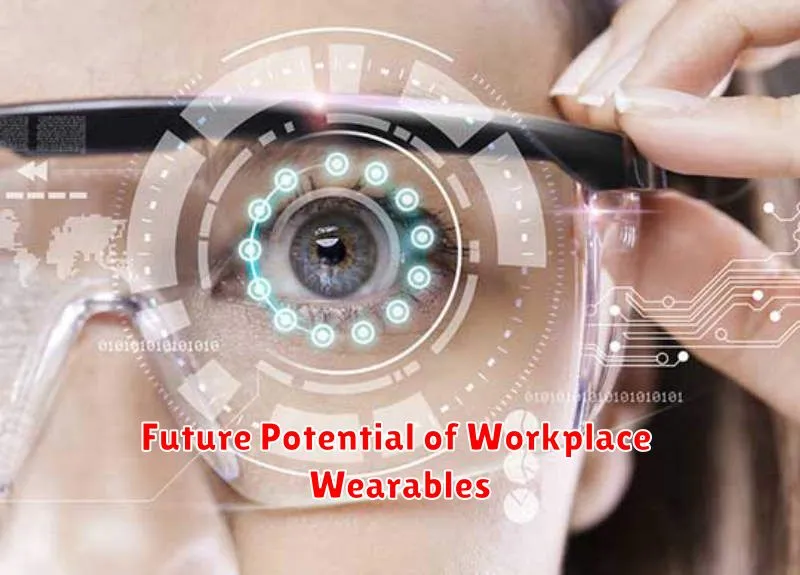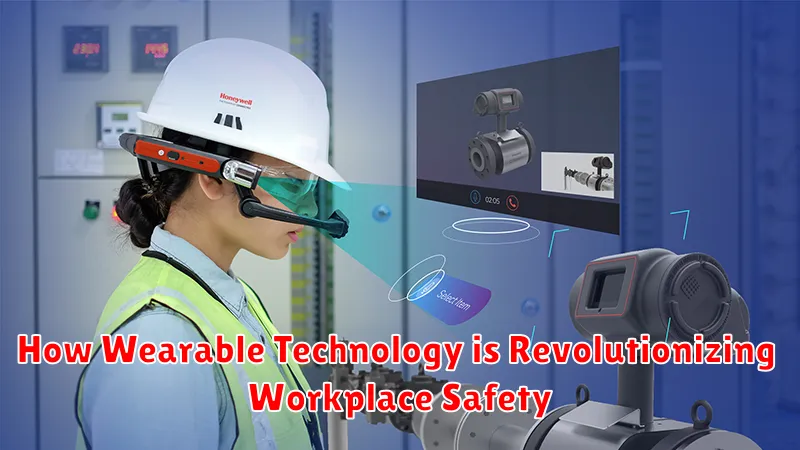Wearable technology is rapidly transforming the landscape of workplace safety. From smartwatches and fitness trackers to specialized sensors and augmented reality (AR) devices, these innovative tools offer unprecedented opportunities to mitigate risks, enhance safety protocols, and cultivate a more secure work environment. This evolution in workplace safety technology is empowering businesses to proactively address potential hazards, ultimately reducing accidents, improving worker well-being, and fostering a stronger safety culture.
This article delves into the multifaceted ways wearable technology is revolutionizing workplace safety. We will explore the diverse applications of these technologies, examining how they monitor vital signs, detect environmental hazards, provide real-time feedback, and facilitate effective communication. By understanding the potential of wearable technology, businesses can make informed decisions to implement these powerful tools and create a safer and more productive work environment for all employees. Furthermore, we will discuss the benefits and challenges associated with integrating these technologies, providing a comprehensive overview of this rapidly evolving field of workplace safety.
Understanding Wearable Tech in the Workplace
Wearable technology encompasses electronic devices worn on the body, collecting and transmitting data. These devices range from smartwatches and fitness trackers to specialized augmented reality (AR) glasses and exoskeletons. In the workplace, this technology offers significant potential for enhancing safety, productivity, and communication.
Wearables can monitor vital signs, environmental conditions, and worker movements. This data allows for proactive intervention, preventing accidents before they occur. For instance, a wearable could alert a worker to high noise levels or a dangerous posture, promoting a safer work environment.
Improving Employee Safety and Monitoring
Wearable technology offers significant advancements in employee safety and monitoring. Real-time data collection allows for proactive intervention, preventing accidents before they occur. Devices can monitor vital signs, detecting potential health issues like fatigue or heat stress. This allows for immediate assistance and reduces the risk of serious incidents.
Environmental monitoring through wearables provides data on hazardous conditions like air quality or noise levels. This information allows companies to address potential hazards and create a safer work environment. Additionally, location tracking can be crucial in emergency situations, enabling rapid response and assistance for employees in distress.
Wearables in Health and Wellness Programs

Beyond safety, wearables contribute significantly to employee health and wellness programs. Tracking daily activity levels, such as steps taken and calories burned, encourages healthier lifestyles. This data can be integrated into company wellness initiatives, promoting friendly competition and rewarding healthy habits.
Biometric data collected by wearables, including heart rate and sleep patterns, offers valuable insights into individual well-being. This information empowers employees to make informed decisions about their health, and can even facilitate early detection of potential health issues.
By incorporating wearables into wellness programs, companies can foster a culture of health and well-being, potentially leading to reduced healthcare costs and increased productivity.
Real-Time Data for Incident Prevention
Wearable technology provides a critical advantage in safety management by offering real-time data streams. This allows for proactive incident prevention instead of reactive responses after an event. Sensors in wearables can detect potentially hazardous situations, such as a worker entering a restricted area or approaching dangerous equipment.
This real-time data enables immediate alerts to be sent to the worker and safety personnel, allowing for timely intervention to prevent accidents. For example, a wearable could detect a worker’s elevated heart rate and body temperature, indicating potential heat stress, and trigger an alert to take a break.
Privacy Concerns and Solutions
While wearable technology offers significant safety advantages, it also raises privacy concerns. The collection of biometric and location data can feel intrusive to employees. Concerns include the potential for misuse of data, unauthorized access, and constant surveillance.
Addressing these concerns requires a multi-faceted approach. Transparency is key. Companies must clearly communicate what data is being collected, why, and how it will be used. Data security measures, including encryption and access controls, are crucial. Finally, offering employees control over their data, such as the ability to opt-out of certain data collection practices, can foster trust and alleviate concerns.
Cost-Benefit Analysis of Wearables
Implementing wearable technology in the workplace requires a careful cost-benefit analysis. The initial investment can be substantial, encompassing the devices themselves, software subscriptions, and potential integration with existing systems. Training costs for employees on proper usage and data interpretation should also be factored in.
However, the potential benefits can outweigh these costs. Wearables can significantly reduce workplace incidents, leading to lower workers’ compensation claims and insurance premiums. Increased productivity through real-time feedback and improved workflow can also be achieved. Furthermore, some wearables monitor employee health, potentially reducing long-term healthcare costs.
Popular Workplace Wearable Devices
Several wearable devices are gaining traction in various industries for enhancing workplace safety. Smartwatches are frequently utilized for real-time alerts, including fall detection and proximity warnings. They also offer physiological monitoring such as heart rate tracking.
Smart glasses provide augmented reality overlays for tasks like equipment maintenance and repair, offering hands-free access to critical information. Wearable sensors embedded in clothing or safety gear monitor worker posture, exertion levels, and environmental factors like temperature extremes and hazardous gases.
Exoskeletons are increasingly deployed to provide physical support to workers performing strenuous tasks, reducing the risk of musculoskeletal injuries.
Implementing a Wearable Tech Strategy
Successfully integrating wearable technology into workplace safety requires a strategic approach. Planning is paramount, beginning with a thorough risk assessment to identify specific hazards and areas for improvement.
Next, select devices appropriate for the identified risks and the work environment. Consider factors like durability, battery life, and required data capture capabilities.
Deployment should be phased, starting with a pilot program to evaluate effectiveness and gather feedback. Training employees on proper device use and data interpretation is crucial.
Finally, establish a process for data analysis and utilize the insights to refine safety protocols and proactively address potential hazards. This iterative approach will maximize the benefits of your wearable tech investment.
Case Studies and Success Stories
Several organizations have successfully implemented wearable technology to enhance workplace safety, resulting in quantifiable improvements.
For example, a construction company equipped its workers with smartwatches that monitor vital signs and detect falls. This led to a significant reduction in workplace accidents and faster emergency response times.
In another case, a manufacturing plant deployed wearable sensors to track worker posture and movement. This initiative helped identify high-risk activities and implement ergonomic adjustments, resulting in a decrease in musculoskeletal injuries.
Future Potential of Workplace Wearables

The future of workplace wearables promises even greater advancements in safety and productivity. Integration with augmented reality (AR) could overlay real-time information onto a worker’s field of vision, providing step-by-step instructions, hazard warnings, or remote expert assistance.
Advanced biometrics will move beyond basic heart rate monitoring to track stress levels, fatigue, and even predict potential health episodes. This data will enable proactive interventions, personalized safety protocols, and more effective wellness programs.
Exoskeletons, already seeing initial implementation, will become more sophisticated and lightweight, reducing strain and preventing injuries for workers engaged in physically demanding tasks.
The development of miniaturized sensors and improved connectivity will further enhance data collection and analysis, driving deeper insights into workplace safety and empowering employers to make data-driven decisions.

